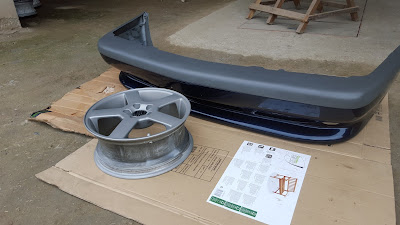Below you can see old hoses with a lot of cracks..... so a big risk of failure
On a car able to 240kmh it is better not to risk, especially as the price of the hose is few dozen of euro... I bought the hoses on skandix.com, you can see below the direct link
http://www.skandix.de/en/spare-parts/brakes/brake-hoses-pipes/brake-hose-front-axle-fits-left-and-right/1001236/
To do the replacement firstly jack up the front of the car and support it on a axle stands, remove front road wheels (under any circumstances we don't work under or aside of the car supported on a crick or hydraulic jack only)
At this time we must thoroughly clean any hose end junction
To do this we can use a brush or a not furry rag coiled around a small screwdriver, we spend a lot of time for cleaning in order to avoid any possible circuit contamination.
To avoid an excessive fluid spillage we can use this method:
Unscrew and remove the brake fluid tank cap
Top up the tank with new fluid
cover the filling hole with a piece of polythene and secure it with a rubber band around the neck.
The best way is to unscrew the hose firstly at the pipe connection side, to do this we can use 14mm and 11mm spanner.
And remove the hose from the caliper with a 14mm spanner
Now, install the new hose on the caliper....
Remove the piece of polythene and bleed the circuit in order to eliminate any air bubble


















































